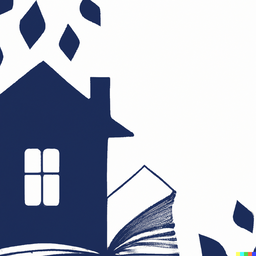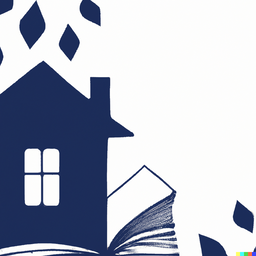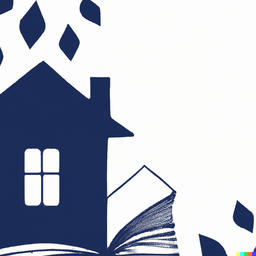
What is the significance of the color blue used for the word "house" throughout the book?
In Mark Z. Danielewski’s experimental novel House of Leaves, the word “house” is colored blue throughout, even when represented in mirror writing, braille, or unusual arrangements. This bold typographical choice immediately leaps out, underscoring “house” visually on the page. Analyzing the significance of this blue colouration in various contexts provides insight into Danielewski’s complex themes.
The Visual Significance of the Blue "House"
On a basic level, the vivid blue house calls attention to the centrality of the home space itself as the site of the novel’s bizarre supernatural events. The blue instantly signals the home’s unnatural nature. Visually embellishing “house” immerses the reader in the uncanny mood Danielewski cultivates through manipulating textual form.
The Uncanny Depths of the Blue House
The different shades of blue, fluctuating mysteriously against the black text, also evoke the home’s cavernous, unknown depths. The blue takes on a ghastly cast on occasions when horror emerges, such as when the word “screams” appears in red, connecting blue with the home’s haunting qualities.
Symbolic Meanings of Blue and Their Connection to the House
Conceptually, blue often symbolizes sadness, stability, or the metaphysical. Danielewski may be playing with these associations to signal the home’s role as emotional anchor but also portal to terrifying ontological uncertainty. The blue house may represent the power of place to shape identity in both grounding and disorienting ways.
Conclusion
Ultimately, Danielewski’s unorthodox use of color for “house” seems designed to visually echo his themes regarding the familiar home transformed into supernatural enigma. The blue house draws the reader’s focus, paralleling the characters’ disquieting fixation on their uncanny dwelling. Its variability and fluidity enact the home’s mutable nature.
Popular posts
-

Unofficial Sparknotes Guide to "House of Leaves" by Mark Z. Danielewski
November 2nd, 2023
-

Chapter Summaries of "House of Leaves"
November 2nd, 2023
-

Character Analyses in "House of Leaves"
November 2nd, 2023
-

Themes in "House of Leaves"
November 2nd, 2023
-

Notable Quotes from "House of Leaves"
November 2nd, 2023
-

Discussion Questions for "House of Leaves"
November 2nd, 2023